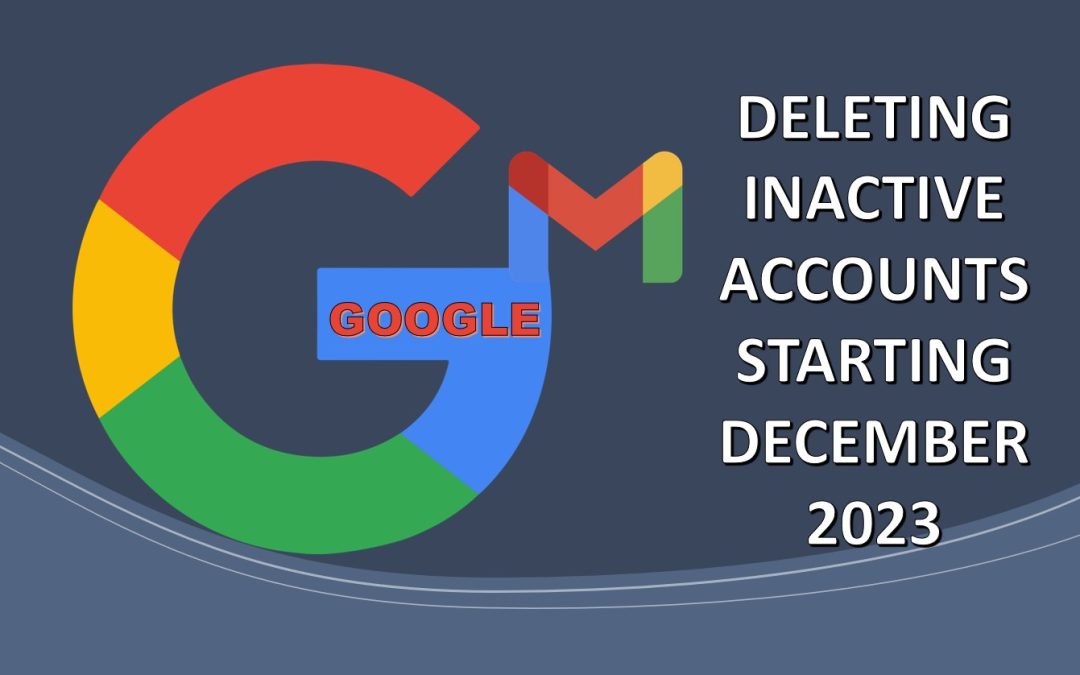If you have an old Google/Gmail account you have not used for a while, please read this.
Google has been notifying inactive accounts that starting in December 2023 inactive accounts will be deleted. They are sending “several reminder emails” before any action is taken. Notification emails are also sent to any recovery email address on record because the user will probably not see messages in an inactive account.
Why is Google doing this? It’s actually for our security. According to Google, accounts that have been abandoned usually have weak passwords and are 10 times less likely than active accounts to have two-factor authentication set up. This makes them more vulnerable to the “bad guys.” It creates a higher risk for both the account holder and everyone else, because these vulnerable accounts, once compromised, can be used not only for identity theft but also to send spam emails to others. Because of the susceptibility to security threats such as phishing and account hijacking, Google will begin deleting accounts that have been inactive for two or more years.
Although Google’s new policy went into effect on May 16, 2023, the earliest they’ll begin deleting accounts is December 2023.
Some people use an email address as backup storage based on the assumption that it will always be there, so if you’ve been using an inactive Google account to save and store files, you’ll want to protect it. If your account is deleted, you’ll lose all associated content, which includes Google Workspace (Gmail, Docs, Drive, Meet, Calendar, etc.) and Google Photos.
If you have a Google account that you intentionally haven’t used or had forgotten about but want to keep, here’s a list of actions you can take to ensure your account isn’t deleted.
Sign into your account and proceed with any of the following:
- Read or send an email
- Use Google Drive
- Watch a YouTube video
- Download an app on the Google Play Store
- Use “Sign in with Google” to sign into a third-party app or service
Once you’ve made the account active again, be sure to create a strong password and also use MFA (Multi Factor Authorization).
As always, NGT is here to help!
Contact ngthelp.com with questions.
